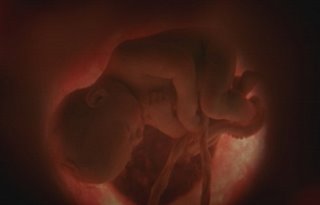
New National Geographic Channel Shows
"In the Womb: Multiples”
Egg and sperm meet and spark a perilous journey of fetal development, but what if there are two, three or even four along for the ride? In the Womb: Multiples, an unprecedented two-hour world premiere special, utilizes groundbreaking technology to take viewers into the extraordinary world of twins, triplets and quadruplets as they develop in utero. The special follows the stories of three expectant mothers from conception to birth and travels inside the womb to see the tiny fetuses begin to interact with each other — pushing, kicking and even what looks like playing and kissing. Amazing 4-D ultrasound images and revolutionary new fetal imaging techniques reveal how these multiples grow and compete for resources. For more information, visit www.ngcinthewomb.com.
Premieres...
"Dog Whisperer: Sophie & Riley, Aussi & Sasha, Bebe & Lulu”
Monday, December 11 at 9:00 PM ET/PT (World Premiere)
Riley and Sophie are both basset hounds that were adopted by the Klooz family in December 2004. Since then, Sophie has been bullying Riley over food, treats and their owners’ attention. Can Cesar curb this sibling rivalry and restore peace? Then meet Aussi, a dingo mix from
"Amazing Planet”
Tuesday, December 12,
Through stunning high definition and advanced CGI, this two-part special, narrated by Emmy award-winning actress Patricia Clarkson (HBO’s “Six Feet Under”), explores two key pieces of earth’s fascinating life story: fire and water. Join the National Geographic Channel and go on a high-speed journey from the majestic peaks of the
"Amazing Planet: Born of Fire" (Part 1)
Tuesday, December 12 at 9:00 PM ET/PT (World Premiere)
Go deep into earth’s core for a glimpse of this unstoppable engine of creation and destruction. Amazing Planet: Born of Fire explores earth’s beginnings, from space rubble circling in a slow gravitational dance some 4.5 billion years ago; and examines its future, millions of years from now, when some of our most beloved landmarks could be leveled. Advanced CGI reveals stunning underwater topography, including the seam between two tectonic plates where some of the highest mountains on the planet are formed.
"Amazing Planet: Ocean Realm” (Part 2)
Tuesday, December 12 at 10:00 PM ET/PT (World Premiere)
Amazing Planet plunges into the great seas for an in-depth look at the substance that covers more than 70 percent of earth’s surface: water. The seas nurture life and hide wonders in their depths, but they can also wreak unimaginable destruction. They create tsunamis and spin off super-hurricanes or fierce thunderstorms. Ocean Realm traces the origins of the nascent oceans, which were acidic, dense and corrosive, and explains how global warming is turning today’s oceans into a great repository of extra heat — creating more and more monstrous storms.
"Explorer: Super Carrier”
Wednesday, December 13 at 8:00 PM ET/PT (World Premiere)
The U.S.S. Eisenhower is one of the most advanced ‘super carriers’ in the U.S. Navy’s arsenal. From the control room high above the flight deck down to the mechanics in the hangar bay, Explorer takes you on an immersive voyage onboard this ship that is fresh off a $2.5 billion overhaul. See what it is like to catapult off the deck in an FA-18 as it rockets from zero to 150 mph in 2 seconds, dodge jet exhaust from fighter jets on the flight deck, and drop laser-guided bombs from a Super Hornet for the last time before combat.
"Dangerous Encounters: Deadliest Snakes”
Friday, December 15 at 9:00 PM ET/PT (World Premiere)
National Geographic Channel reptile expert Brady Barr has come face to face with some deadly snakes. Now, in Deadliest Snakes, Brady approaches seven of the world’s most dangerous and venomous snakes to determine which snake is the deadliest. He will scientifically investigate each species of snake by grading them on five basic criteria: size, volume and toxicity of venom, personality, and number of human deaths.
"Killer Instincts: Claws”
Friday, December 15 at 10:00 PM ET/PT (
They slice, grab, tear, and impale- they are claws, and they can sometimes be lethal weapons. Killer Instincts: Claws travels the globe to examine the claws of land, air and sea creatures. In
"NGC's State of the Earth 2006"
Saturday, December 16 at 10:00 PM ET/PT (World Premiere)
During 2006 our planet experienced more than 150 large earthquakes, 50 major typhoons and almost a 100 tornadoes — yet the biggest disaster of the year may have been Climate Change. State of the Earth 2006 (wt) reviews the natural disasters of the past year to analyze the earth’s major systems; the air we breathe, the land we work, the waters we fish, and how wildlife plays a critical role in supporting them. A team of experts also share what they have seen and experienced to further explain why it’s not too late to slow or maybe even reverse global warming.